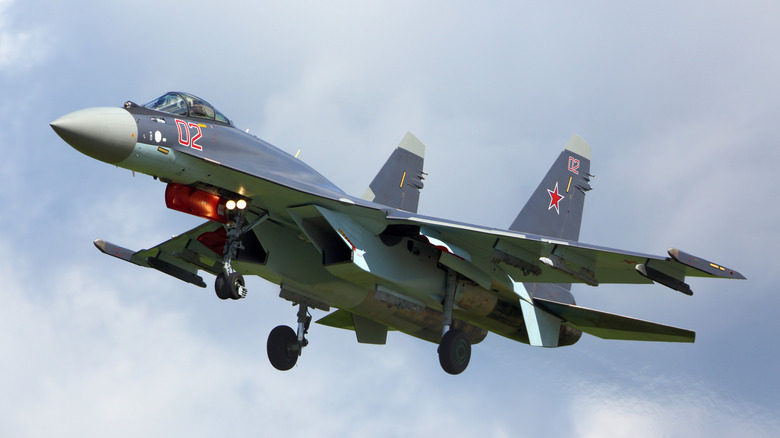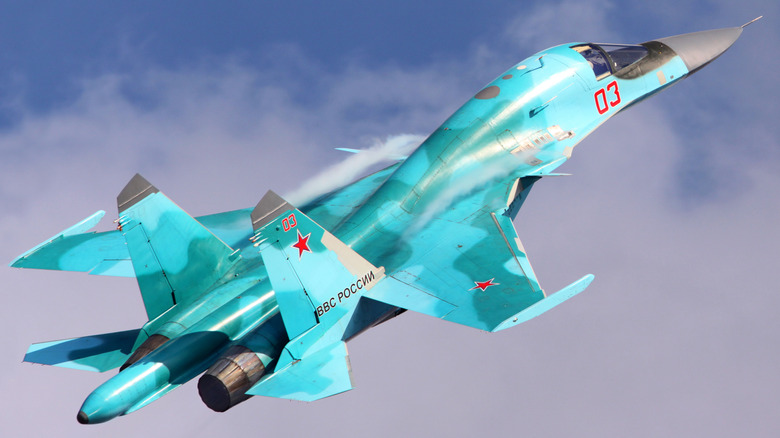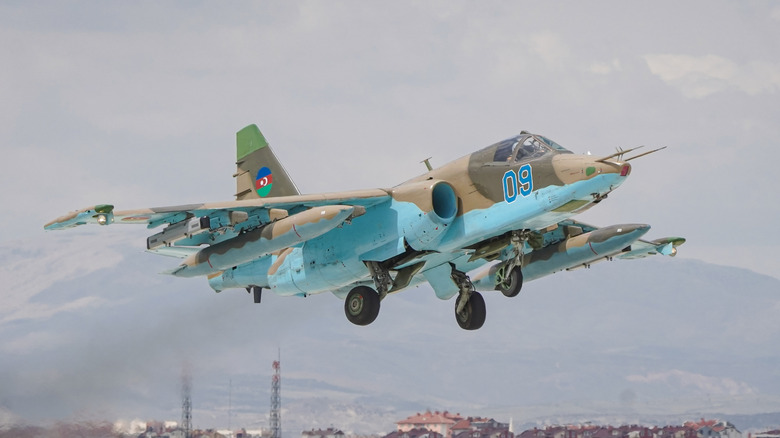Which Militaries Fly The Most Sukhoi Fighter Jets?
Over the decades, Russia has developed some of the most popular and advanced military aircraft in the world. While the MiG family of fighters has long competed with Western fighter jets, it's not the only heavyweight in Russia's aviation arsenal. JSC Sukhoi, the country's most advanced aircraft manufacturer, has produced military aircraft since before World War II.
Today, Sukhoi is behind some of the most formidable jets in the sky, with the Su-57 "Felon" stealth fighter as its magnum opus. Sukhoi fighters are widely known for their superior maneuverability, relatively affordable pricing, and low maintenance costs. These qualities have made them one of Russia's greatest exports.
With over 2,600 active military aircraft in service around the world, Sukhoi is second only to Lockheed Martin among the world's largest military aircraft manufacturers. According to FlightGlobal's 2025 World Air Forces directory, Sukhoi primarily manufactures aircraft for the Russian Federation, which unsurprisingly operates the largest number of Sukhoi jets. Russia currently has 1,113 active Sukhoi aircraft, including trainer aircraft, with 384 of them belonging to the Su-27, Su-30, Su-34, and Su-35 Flanker family.
Countries that operate Global Sukhoi aircraft the most
China holds second place, with 404 Sukhoi-based fighters across various models. Some of these, like the Shenyang J-11, are license-built versions of the Su-27 assembled domestically by SAC (Shenyang Aircraft Corporation) using kits supplied by Russia.
India ranks third, with 265 Sukhoi Su-30MKI fighters in service. Unlike other countries, India assembles these jets locally through Hindustan Aeronautics Limited (HAL) under a production license, making it the only nation to manufacture Sukhoi jets domestically. After India, the number of Sukhoi operators drops sharply. Algeria comes next with 94 Sukhoi aircraft in service. Vietnam follows with 73 aircraft, while Kazakhstan maintains a fleet of 68 jets. Syria has 57 Sukhoi fighters in its arsenal; slightly more than Belarus, which operates 54. Ukraine, despite the current geopolitical conflict, still retains 53 Sukhoi jets in its inventory.
The Su-30 and the Su-24 series are the most widely operated among Sukhoi's offerings, accounting for approximately 21.81% and 16.5%, respectively, of the active Sukhoi fleet worldwide. However, the aging Su-24 is nearing the end of its operational life. For instance, Kazakhstan retired 13 of its Su-24s last year.
Smaller countries with modest Sukhoi fleets
The top 10 nations mentioned above account for roughly 85% of all Sukhoi fighters in service globally. However, many other countries still operate Sukhoi aircraft, spread across 25 additional countries. North Korea operates 52 Sukhoi jets, followed by Angola and Uzbekistan, each fielding 38 aircraft. Poland follows with 32 active Su-22s in its fleet, then Iraq with 30. Turkmenistan operates 25, slightly more than Iran's 24, while Yemen and Ethiopia each have 23, and Venezuela fields 21. Beyond Venezuela, the numbers dwindle further.
Armenia and Azerbaijan both maintain 19 aircraft, while Malaysia operates 18. Indonesia and Sudan each fly 16 Sukhoi jets. Dropping into single digits, Chad and Bulgaria operate nine each, with Peru following with eight. The Democratic Republic of Congo and Uganda both have six operational jets, and Equatorial Guinea owns four. Libya maintains three, while Eritrea, Ivory Coast, Myanmar, and Niger all operate just two aircraft each.
Sukhoi's global footprint shows the legacy of Russian aerospace engineering and its international influence in the sky. However, due to the ongoing war in Ukraine, Russia has halted the export of its weapon systems and aircraft. Additionally, international sanctions restrict Russia from doing business with many of its former and potential new clients. As a result, far fewer Sukhoi fighters are being exported. Still, after the political tensions are overcome, Russia is expected to resume developing new platforms like the Su-75 Checkmate and future variants of the Su-57, which could potentially challenge the F-35 and F-22's air supremacy.


